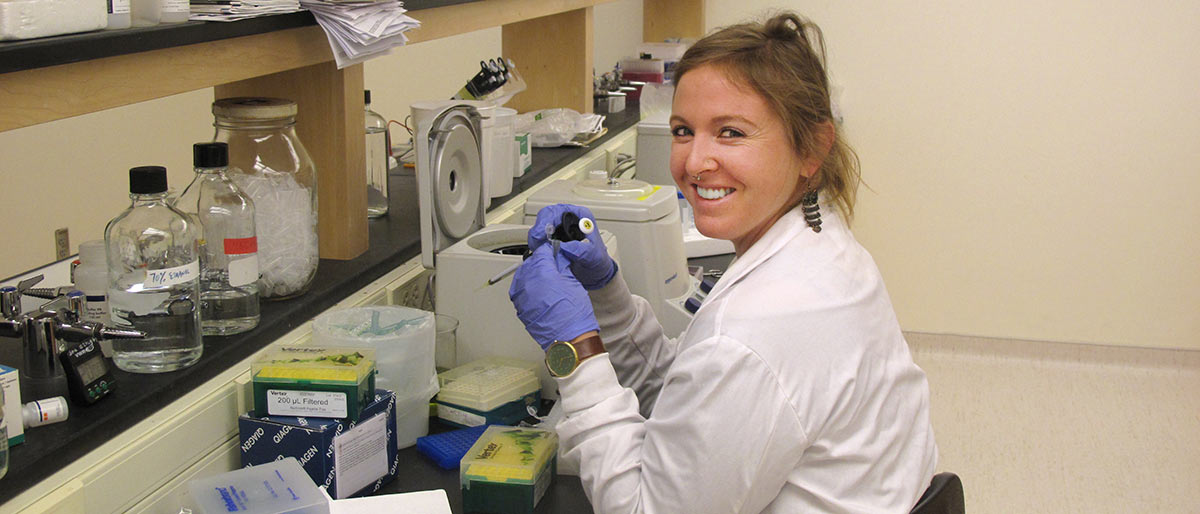- be_ixf; php_sdk; php_sdk_1.4.18
- 51 ms
- iy_2025; im_04; id_22; ih_00; imh_08; i_epoch:1.74530572507E+12
- ixf-compiler; ixf-compiler_1.0.0.0
- py_2025; pm_04; pd_07; ph_23; pmh_03; p_epoch:1.74409220018E+12
- link-block; link-block_link-block; bodystr
- pn_tstr:Mon Apr 07 23:03:20 PST 2025; pn_epoch:1.74409220018E+12
- 0 ms
- be_ixf; php_sdk; php_sdk_1.4.18
- https://sou.edu/academics/biology/facilities/
- https://sou.edu/academics/biology/facilities/

Biotechnology Center
The Departments of Biology and Chemistry at Southern Oregon University established an undergraduate research facility dedicated to study in the interdisciplinary fields of biotechnology. Part of SOU’s commitment to undergraduate science education, the Biotechnology Research Center was made possible through a National Science Foundation Major Research Instrumentation grant and through a generous award from the M.J. Murdock Charitable Trust together totaling almost $400,000.
The Center is currently being used for research on a wide range of organisms and environments, such as investigating the composition and structure of networks of mycorrhizal fungi in oak woodlands, the isolation and molecular characterization of novel microbes from unique environments such as acid mine drainage and the ultra-oligotrophic Crater Lake, the characterization of the microbial communities of serpentine soils, and the phylogeography of pine martens in the Pacific Northwest. The resources of the Center allows student and faculty researchers to apply state-of-the-art equipment and molecular biology techniques to investigate field-oriented questions in our local environment, the biologically diverse and complex Klamath-Siskiyou region.
The well-equipped Center enables researchers to perform a full range of manipulations on both DNA and proteins, from cloning and sequencing of DNA to the purification and analysis of novel proteins.
The instrumentation in the Center includes:
- Sorvall 5C-Plus ultra speed centrifuge
- MJ Research Thermal cyclers, and Eppendorf gradient thermal cyclers
- Kodak gel documentation and analysis system
- Forma Scientific ultra-low-temperature freezer
- Lab-Line Incubated shaker and chromatography cabinet
- Barnsted water filtration system
- Envirco laminar flow hood
- State-of-the-art computer hardware and software for DNA sequence analysis and phylogenetic analysis
- Accessory equipment for DNA and protein manipulation (microcentrifuges, water baths, electrophoresis systems, etc.)
SOU students are fortunate to be able to get hands-on experience and intensive mentoring on a range and quality of research equipment rarely available at similar small liberal arts colleges. The Center continues to be a focus for active grant support by the National Science Foundation and for partnerships with local land management agencies.
Greenhouse
Programs in the botanical sciences benefit from a 2200 ft2 greenhouse. The facility houses a diversity of living specimens for classes including separate bays for different conditions (e.g. a cactus room). The greenhouse is also used for faculty and student research. Students learn basic horticultural practices (propagating cuttings) used to support the Biology club’s plant sale.
Collections
SOU Herbarium:
The Herbarium at SOU (Herbarium code SOC) is a collection of pressed plant specimens located in the Department of Biology Natural History Museum. It was begun by Dr. Frank Lang in 1967 as a teaching facility, it contains representatives of regional flora and serves as a repository for voucher specimens and as a secure site for loans from other institutions for local faculty and student researchers. This collection assists researchers land managers in providing evidence of the arrival of invasive species in an area and the shifting of species ranges in response to climate change and identifying weeds and rare species. Herbarium SOC collections have shown the occurrence in southern Oregon of species formerly known only from California.
Information and images for over 23,000 SOC specimens are listed in the database of the Consortium of Pacific Northwest Herbaria, with about 3000 specimens not yet entered. About 21,000 specimens are from Oregon, almost 10,000 from Jackson County, and 1650 from California. The majority of specimens were collected by SOU students. The Herbarium includes gifts from Oregon State University, the University of Oregon, the Rogue River-Siskiyou National Forest, old collections formerly held by the Klamath Falls Museum, and private collections from Jim Duncan, Frank Callahan, and other botanists.
SOU Natural History Museum:
The Biology program house an extensive natural history collection of specimens to support our program and to provide a valuable resource for researchers from institutions across the country. The Natural History collection also houses a diverse range of vertebrate specimens including most of the species occurring in the region including birds, mammals, reptiles, amphibians, and fish.
SOU Insect Museum:
The Southern Oregon Insect Museum is the second largest in Oregon and contains about 30,000 prepared specimens of insects collected from around the world, with an emphasis on specimens from southern Oregon and northern California, all of which are available for teaching and research.
Achieve Your Degree in Biology at SOU
Contact Biology
SOU Biology Program
1250 Siskiyou Blvd.
Ashland, OR 97520
541.552.6796
– Questions About Biology? –
